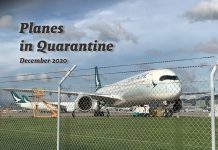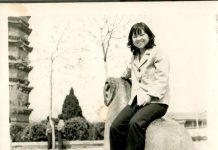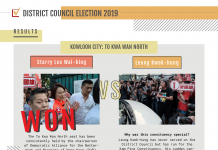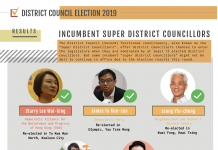As number of Mainland visitors grows, what can Hong Kong do to woo international tourists?
By Emily Man, Eric Park
Crowds of mainland tourists jostle for the best photo-shooting spots with Victoria Harbour in the background at Tsim Sha Tsui’s Avenue of Stars, oblivious to the curious looks from other tourists. A slightly different scene plays out in Sheung Shui, a new town on the Hong Kong-Mainland border every day. Here, mainland visitors with multiple-entry permits crowd the entrances of dispensaries, where they stock up on milk powder and other daily necessities, either for personal use or for illegal resale later.
The influx of mainland tourists with high purchasing power has brought massive revenues to the retail industry, but it has also caused inconvenience to local residents and led to conflicts between Hongkongers and mainlanders, which boiled over last month in protests against parallel traders in Shatin and Tuen Mun that saw police use pepper spray inside a shopping mall.
It is not just the inconvenience that has triggered resentment in Hong Kong, but also the changes to the local landscape, with the ever increasing number of shops and businesses which seem to merely cater to mainland tourists.
According to the Hong Kong Tourism Board, Hong Kong accommodated more than 44 million mainland visitors last year, which means that the Mainland continues to be the territory’s biggest source of visitors. In 2009, mainland visitors accounted for about 60 per cent of total arrivals. That has steadily increased to almost 79 per cent in five years.
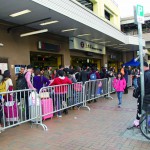
The government is aware of this trend and the Hong Kong Tourism Board has put its focus on expanding international markets and maintaining a diverse portfolio of visitors, in order to uphold Hong Kong’s image as Asia’s World City.
The board’s Work Plan for 2015-2016 will allocate nearly half of its marketing budget of HK$352 million to promotions targeting overnight visitors. Of this, 76 per cent will be spent on reaching out to international markets. But before the efficacy of these measures can be seen, companies targeting non-mainland tourists are already struggling to attract business.
Henry Tse, administrative director of Continental (HK) Travel Service Co Ltd., which caters to visitors from India and Southeast Asian countries such as Vietnam, Malaysia and Indonesia, says his company is struggling to stay afloat. “There’s no profit at all. Starting from 2012, the margin [of] profit I can tell you is zero,” Tse says.
To make matters worse, there were drops in visitor numbers from Tse’s target markets in Southeast Asia last year. In particular, the Hong Kong Tourism Board recorded negative growth in visitors from Malaysia and Indonesia, at about minus 30 per cent and minus 20 per cent respectively.
Given what he called a “terrible drop” in tourists from these markets, Tse says they hope to attract tourists from new markets, such as countries in the Indian Ocean. He thinks the lack of new tourist attractions is the main reason for the decline in visitors from Southeast Asian countries. For instance, he says Ocean Park has long been one of the very few major attractions in Hong Kong but, “we don’t have a new one to replace it.”
Raymond Huang Zhao-jie, who as one of the founders of Liuda Walking Tour Hong Kong is a newcomer to the inbound travel industry, disagrees. Huang’s company provides cultural guided walking tours targeting both Hong Kong locals and overseas visitors. Huang believes that offering interesting cultural experiences, such as Liuda’s Wan Chai Heritage and Haunted Tour, 1967 Riot Tour and Soho Gallery Tour, can be profitable.
Huang thinks Hong Kong is very diverse and many parts of it are yet to be discovered or packaged to attract foreign tourists who are often more curious to explore. Huang says that currently, “when people come to Hong Kong, they come to Hong Kong only for a few things, like go to Ocean Park, Lan Kwai Fong and TST.”
Yet he believes Hong Kong’s distinctive colonial history and cultural diversity are what make the city vibrant and appealing to more adventurous tourists and distinguishes it from cities in the Mainland.
While many regard cultural tours as a niche market in Hong Kong, Huang thinks otherwise. He argues that other big cities such as London and Paris have long-established and well-supported cultural tours, adding that most of the top 10 London tours on the popular travel review website TripAdvisor (http://www.tripadvisor.com/), are walking tours.
Since it was founded a year ago Liuda has only served a few hundred tourists and most of them were local. Huang says his company is still growing and he wants to expand the scope of services.
He has applied for the relevant licenses, including the inbound tour guide license. But he is annoyed by what he says is government inefficiency and red tape. “We have been applying for the license since September, that’s just very slow,” he says.
“You are not protecting the industry. I think you are destroying it,” Huang complains. He blames government inefficiency for a lack of new players and new products in the local tourism industry.
In a written reply, the Travel Agents Registry says in general, they can issue new licenses within four working days of application and upon receiving sufficient supporting documents but this “varies very much from case to case”.
Huang is not the only one who thinks Hong Kong’s tourism industry needs to offer greater variety. The Hong Kong Tourism Board (HKTB) launched the New Tour Product Development Scheme in 2012 to provide funding for marketing and promotion for local tour operators to come up with products incorporating new elements like art and culture, food and wine and heritage or living culture to attract overseas tourists.
Shoestring Travel Ltd. receives funding from the scheme to organise a “Wing Chun” Kung Fu Experience Tour for tourists who are interested in Chinese martial arts.
Wing chun master Sam Lau Kung-shing, who owns Shoestring Travel, says the board subsidises 50 per cent of his spending on promotions, including the cost of printing advertising materials and renting exhibition halls. Through the scheme, he has attended international tourism conventions to promote his kung fu tours to foreign countries.
Lau participated in the World Travel Market 2013 in London, and was at ITB Berlin, a leading travel trade show, last year. He says he would never have been able to get a foot in the door without support from HKTB. With offices around the world, Lau says the board can help his company gain recognition. “To let the foreigners know [about the tour], so when they come to Hong Kong, they don’t need to do research on which is good or bad,” he says.
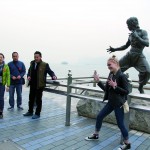
But not all providers of alternative tours are as positive about how the HKTB can benefit them. Some say the board only posts comprehensive itineraries provided by well-established niche tourism companies. This limits the reach of small travel companies that focus on specific fields like eco-tourism, food tourism and culture tourism, and makes it hard for visitors to come into contact with more diverse tourism experiences in Hong Kong.
Tammy Cheung, the marketing and corporate communications manager of Eco Travel Limited, says: “If we give them [HKTB] three or four products they just display one…We have a limited channel to advertise ourselves as a small business and it is very difficult to promote ourselves.”
In addition to improving the “software” such as promotion and publicity, Cheung hopes the government can also provide more supporting facilities and services to support eco-tours that last for several days. She says there is not enough accommodation for visitors to stay in the countryside and compares this to the multitude of guesthouses in Taiwan.
Cheung also points out that in some popular ecotourism destinations like Tung Ping Chau, one of the eight geo-areas of Hong Kong Geopark, restaurants and stores only operate on weekends. “There is no food, no water from Monday to Friday,” she says.
Not only do these sites lack food, electricity and basic amenities for tourists, they are not hooked up to tap water. Restaurants there are forced to use underground water but this does not comply with the Public Health and Municipal Services Ordinance, which means they cannot be officially licensed. Villagers have been requesting tap water but the government has turned them down, citing low cost efficiency.
The inconvenience to tourists is compounded by a lack of information on official websites warning visitors about the lack of catering services on the island.
However, legislator Sin Chung-kai, who was an HKTB member from 2009 to 2014, does not think Hong Kong needs more facilities for eco-tours. “Hong Kong is very small, I think you can’t compare it with others like Taiwan,” he says. Besides, he thinks very few people would be interested in eco-tours lasting for several days.
Sin says the government has been working on attracting more international visitors by allocating most of the HKTB’s promotion budget for international markets. He says it is difficult to change the make-up and proportion of visitors from different countries and regions as the government simply cannot put a cap on the number of visitors from any specific places.
Despite the steep growth in the number of mainland tourists and the resulting conflicts, Sin thinks Hong Kong’s image as an international city still prevails and that the city’s tourism does not rely too much on mainland tourists.
However, he concedes the predominance of mainland tourists does affect the arrival of overseas tourists as it drives up demand for hotel rooms, leading to higher prices which deter overseas visitors from coming to Hong Kong.
Dr Andrew Chan, an assistant professor of the School of Hotel and Tourism Management at the Hong Kong Polytechnic University, agrees mainland tourists have pushed up hotel room rates and displaced some overseas tourists.
But he believes the long-term impact brought by the huge number of mainland tourists goes beyond price hikes. He says having too many mainland tourists will damage the image of Hong Kong as an international city, because the huge number of mainland visitors affects Hong Kong’s overall environment as a travel destination.
“The atmosphere makes [overseas] tourists think that Hong Kong is overcrowded,” Chan says, “especially long-haul tourists from Europe; they think Hong Kong is more crowded than they could have imagined.”
Edited by Grace Cheung



